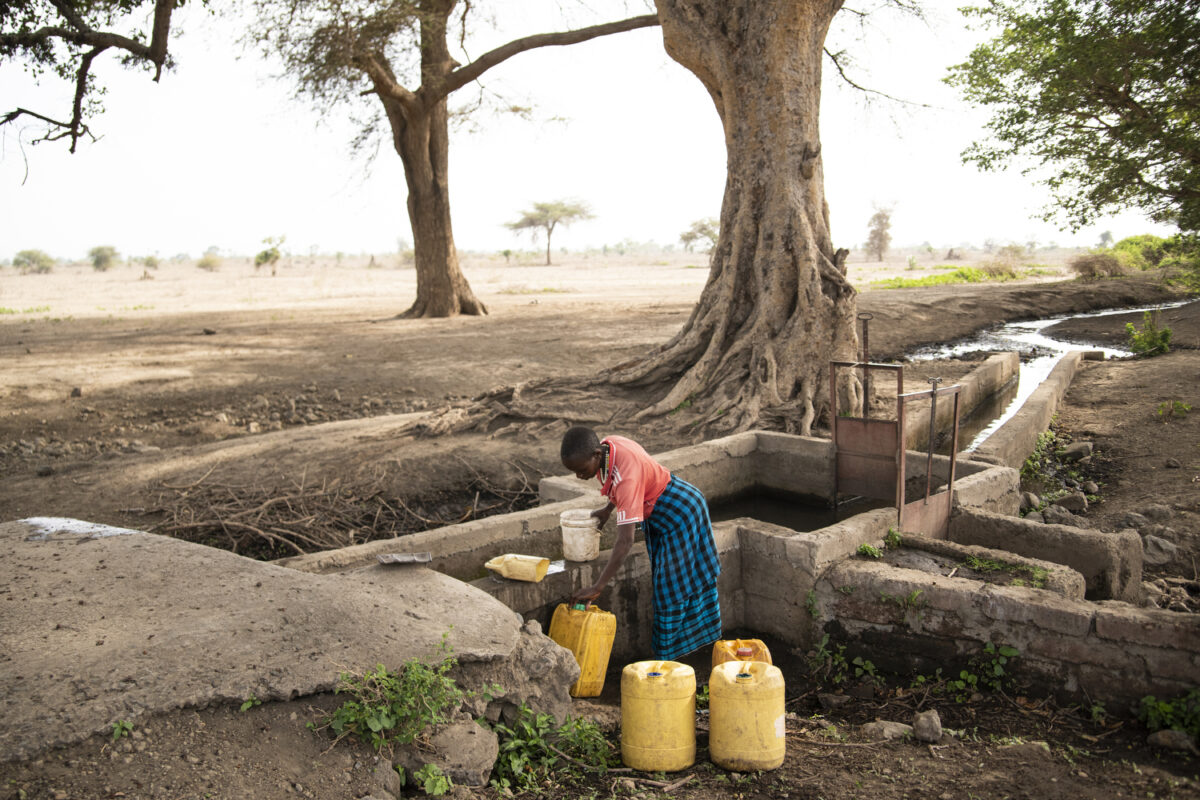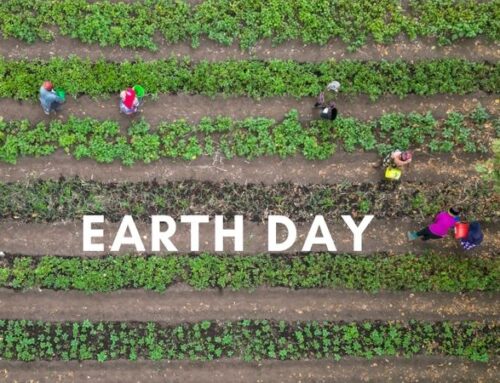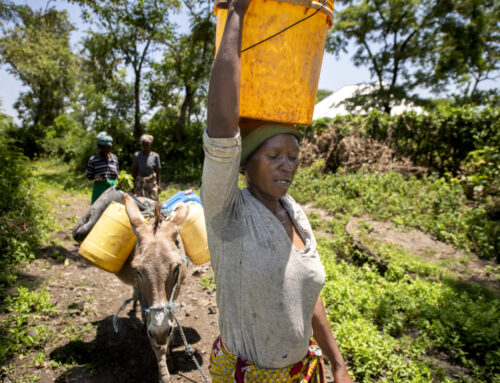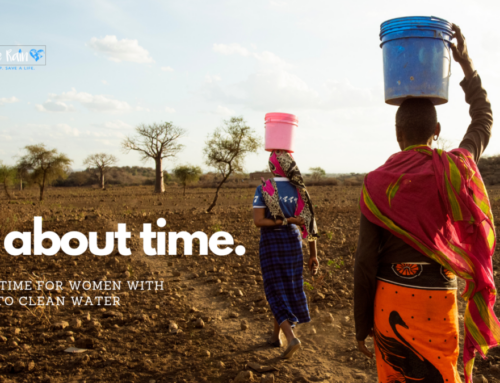By virtue of being so desolate, Lositeti is where our impact is most visible. A desperately harsh environment in the grip of drought lays bare the importance of saving the rain.
Whenever we visit, word gets around, and the Women’s Water Initiative members converge from all directions, eager to connect. Their work is a big part of life in Lositeti. Before receiving rainwater harvesting tanks of their own, the women were all walking eight hours for water. If they went as a group, they would leave at 4:45 am. Going alone, they would wait for safety’s sake until the sun rose to start the journey.
3 donkeys. 200 Liters. 8 hours.
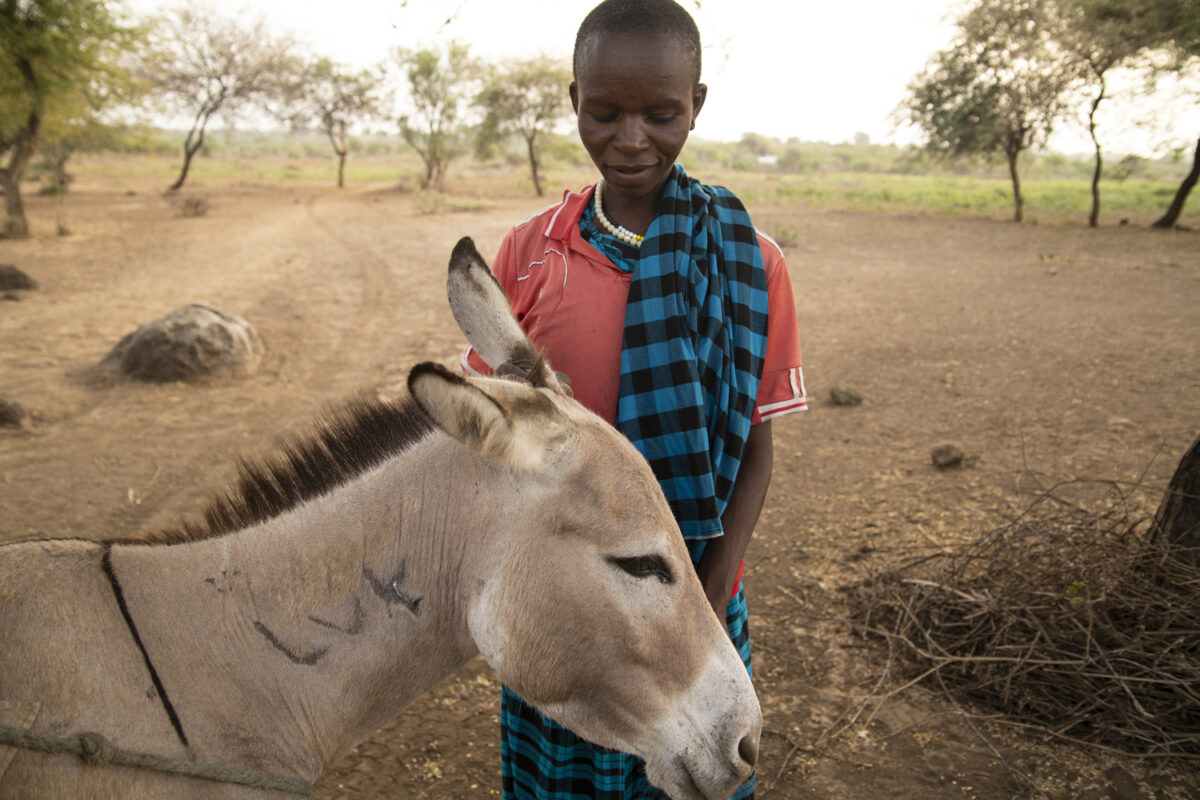
Nasinyari intended to leave earlier today, but her youngest has flu and needed her. After comforting and breastfeeding, she tethers empty water drums to their three donkeys and sets off. The two bigger animals carry four 20-liter containers each. The smallest carries two. 200 liters last a day and a half. She makes this trip every second day.
Though the walk will be hotter now, there’s part of her that doesn’t begrudge the sunshine. The night is dangerous, and though she only leaves half an hour before sunrise, the darkest hour is before dawn. The uneven ground trips you, thorns snag at your clothes, and the shadows are a cloak for danger.
I ask if she worries about hyenas – but it’s not that. It’s men.
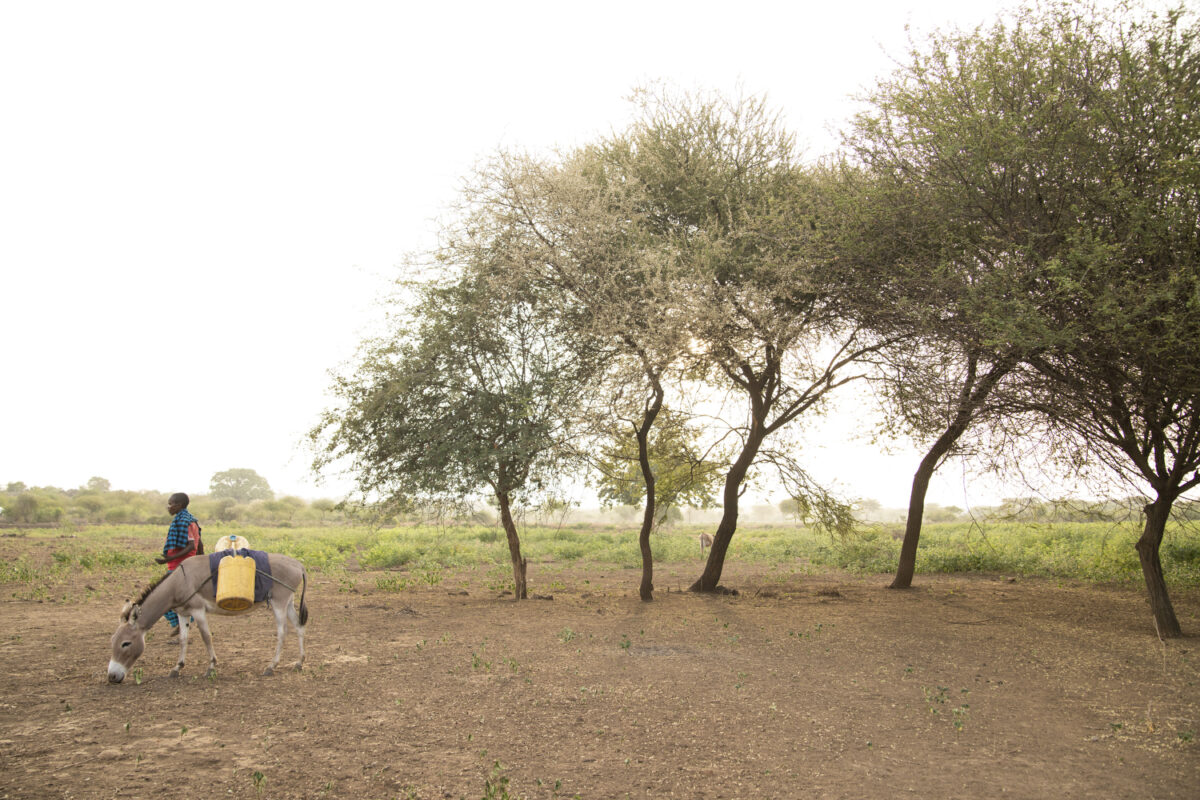
Water is life. We cannot be without it. Necessity forces women to make this journey, and it is devastatingly easy for predators to take advantage of this fact.
She and the donkeys keep up a brisk pace, even as the sun climbs in the cloudless sky. As we near the river, the flat, baked, unforgiving landscape gives way to lush farms and tall trees.
We climb down its banks and find… nothing.
We’re downstream of furrows diverting water to the farms, and as the river dries, there’s no surplus to flow further. Nasinyari sighs. We get back on the road and trek to one of the furrows. In colonial times, this was a sisal plantation. When these channels were dug, there was a lot more water – and considerably fewer people.
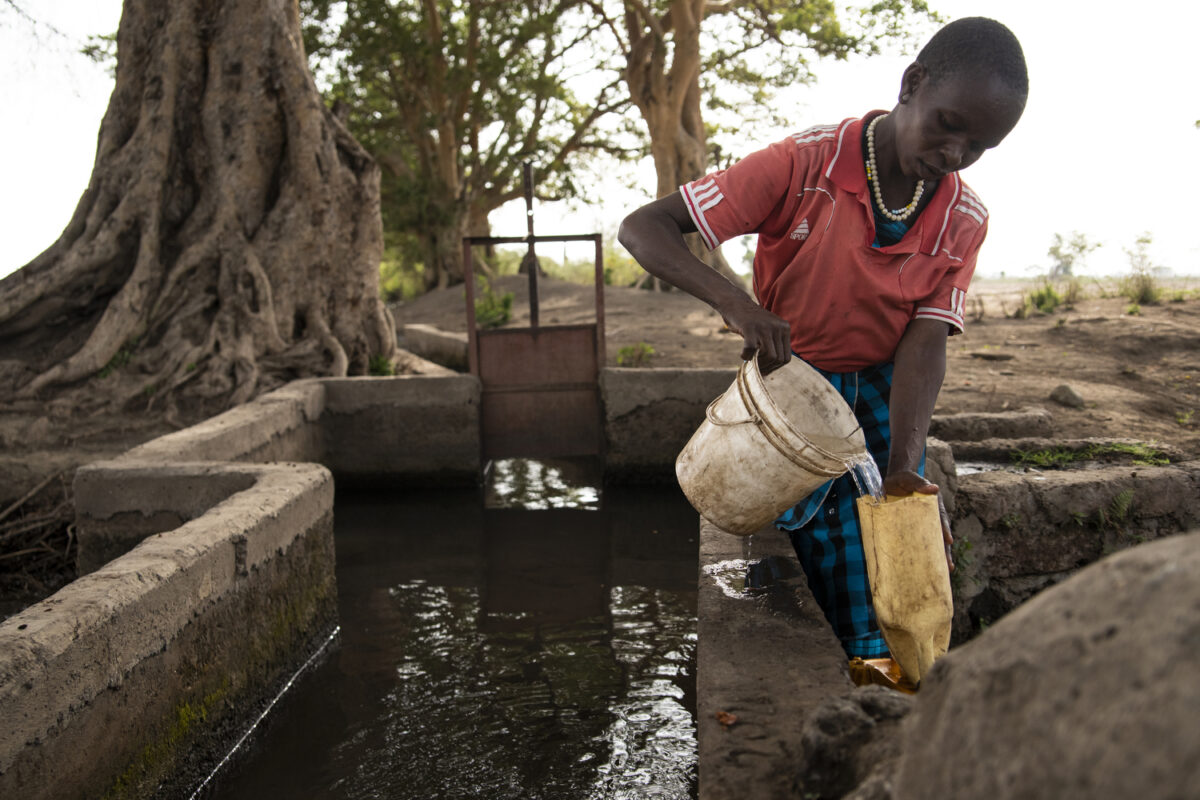
Before turning back home, we stop in at the river again, this time further upstream. Nasinyari needs to know where it still flows, so she doesn’t waste time on her next trip. We emerge in a grassy glade with a stream running through it. She collects some water here. It is clear and cool, and closer to the source. The shade feels like an oasis, and we hate to leave, but the day is half gone already.
It seems cruel that the hardest part of the journey happens over the hottest hours. As we near home, the little donkey buckles. Her legs fold beneath her, and she won’t be moved. Nasinyari untethers her from her load.
They store the water containers carefully in their small cooking hut. The baby clamors for her mother, coughing between sniffles. There’s no time to rest. There are clothes to wash, and hungry mouths to feed. The walk was merely the first task of the day. The rest of the work now begins.
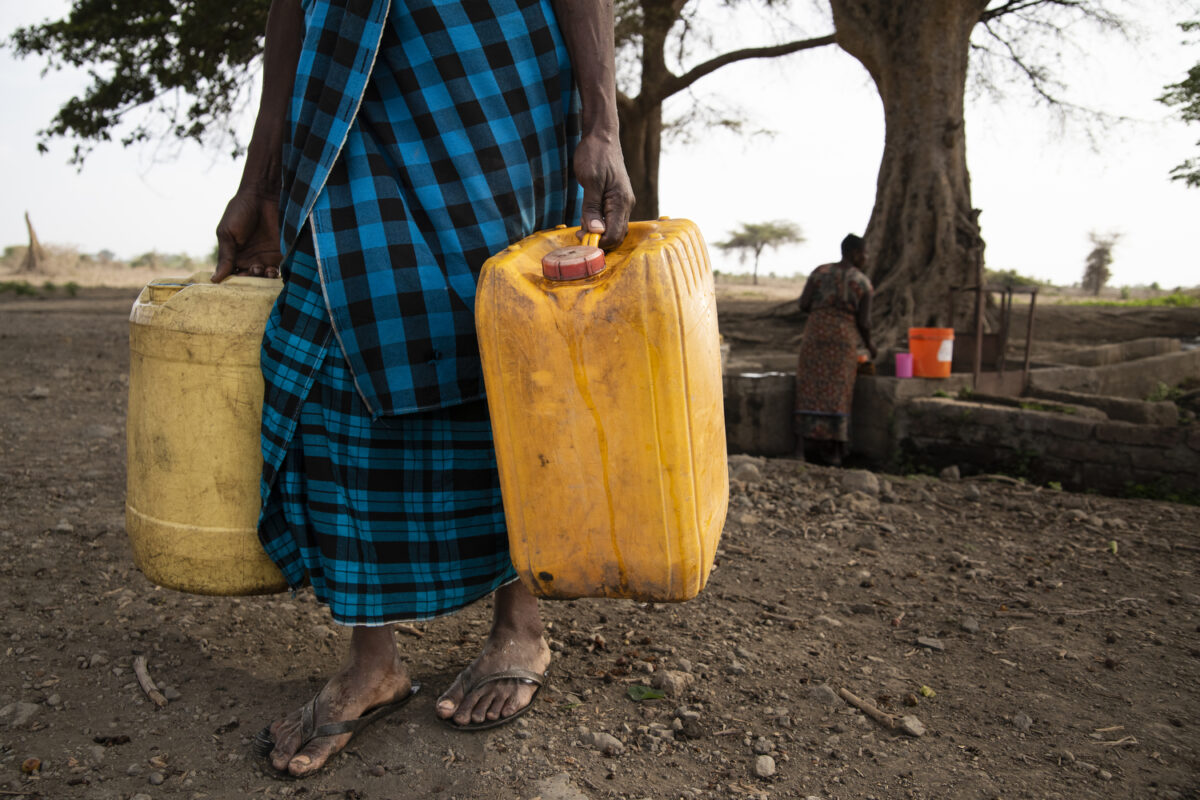
Dive Deeper
Since arriving in Lositeti in 2017, we have built 125 domestic tanks, plus a rainwater harvesting system at the school that allows children to take water home. The government has installed pumps nearby, too. Access has improved. However – the water from the government pumps isn’t suitable for drinking. The women use it for cleaning, laundry, and bathing. And it’s not free. You have to pay per liter.
Since the drought set in, those with tanks at home use their precious rainwater reserves solely for drinking. They buy pump water for everything else. Because of the ripple effects of a tank, they are solvent enough to afford this – which is not the case for Nasinyari, who goes to the river for all her water needs. Even if she could afford the pump, she would still require drinking water, so her walk is unavoidable.
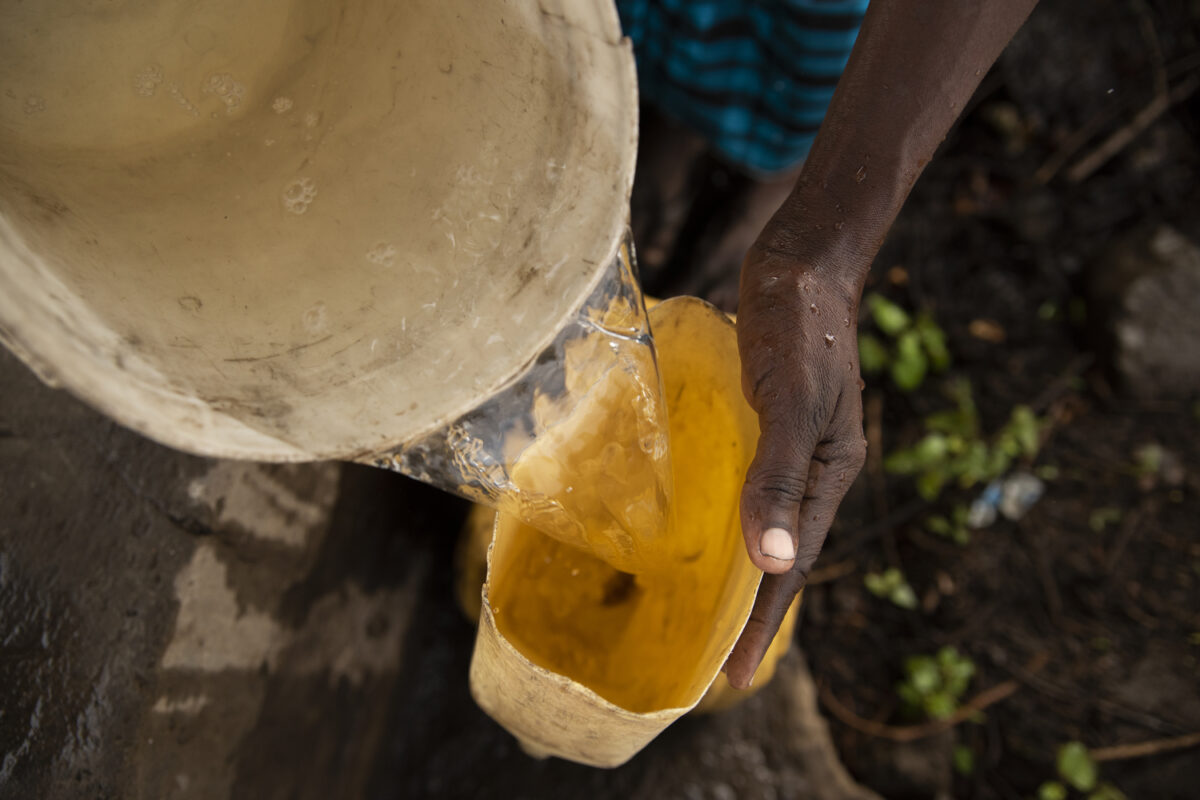
The drought has made things harder.
Nasinyari’s family are Maasai tribespeople, and having cattle is part of their culture, not to mention a vital source of nourishment. But with nothing to graze, the cows began to starve. Nasinyari’s husband sold the ones that didn’t die. They have managed to domesticate a few wild guinea fowl whose eggs they eat and sell, but making ends meet is tough.
Nasinyari sells bananas. It’s too dry to grow them in Lositeti, so she has a corner on the market. But to source them, she walks even further than the river. She doesn’t have a shop, so she carries her wares door to door. She buys $3.50’s worth and can sell them for a profit of $1.30.
Of their eight children, four are still in school. There are uniforms, schoolbooks, and contributions to school meals to pay for, not to mention medicine when they’re sick. The river is deemed clean, but that’s a relative term. Water-borne illnesses are a frequent occurrence. It’s easy to see why she can’t afford the water from the government pump.
Collectively, women and girls spend 200 million hours fetching water every day around the world.
Give Today and help end the walk for water for women like Nasinyari.
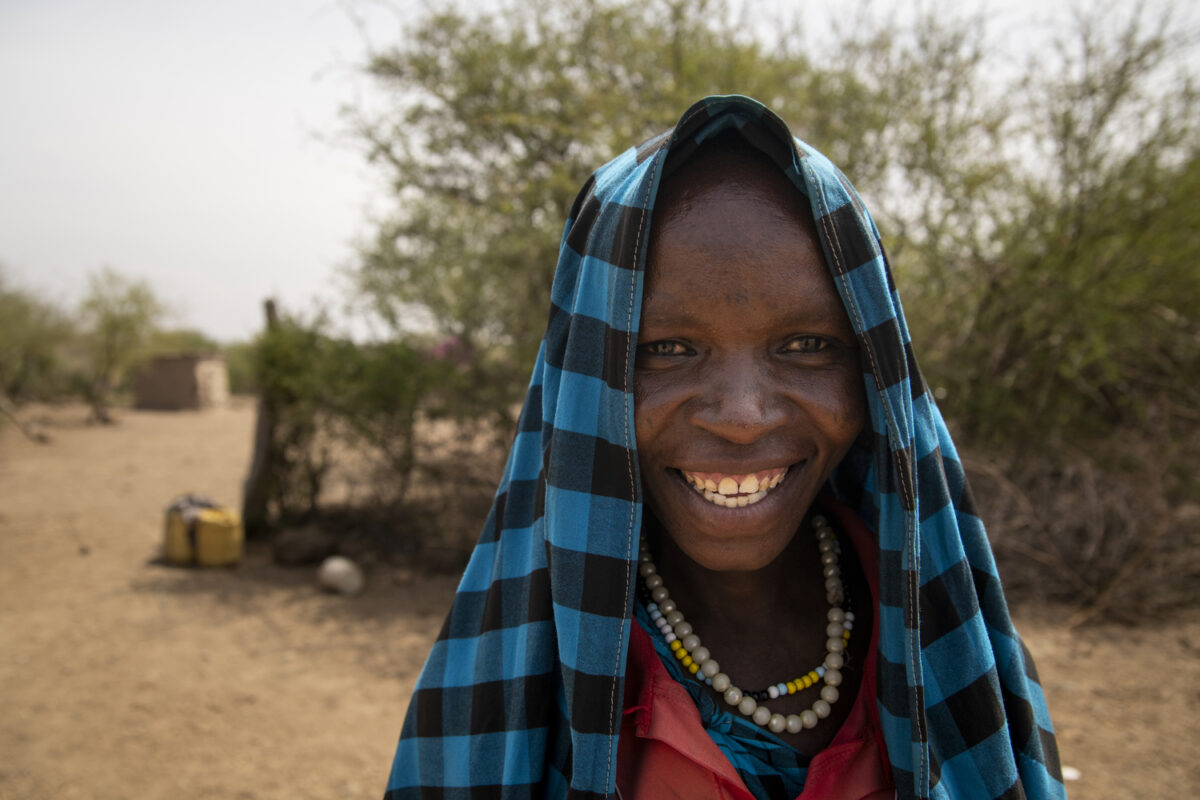
100% of public donations directly fund our projects
